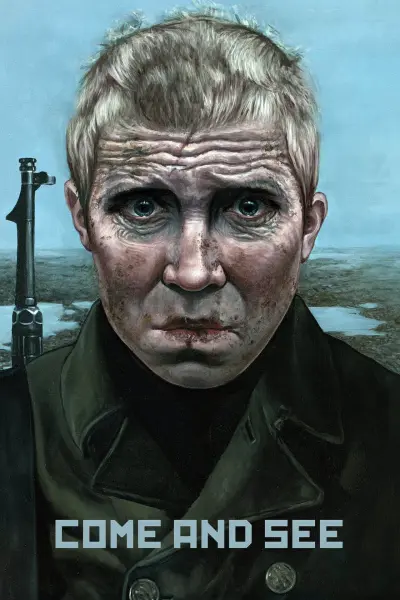
"Idi i smotri," known internationally as "Come and See," is a profoundly impactful war film directed by Elem Klimov. Set against the Nazi German occupation of Belarus during World War II, the film's narrative unfolds through the experiences of Flyora, a young Belarusian teenager. His initiation into the brutal realities of war starts when he finds an old rifle, leading him to join the Soviet resistance movement against the German forces, defying his mother's wishes. This pivotal decision marks his entry into a realm far from his previous life, exposing him to the unrelenting horrors and atrocities of war.
The essence of "Come and See" goes beyond a traditional war story; it is a profound exploration of the human condition under extreme stress. The film poignantly captures the Nazi atrocities and the immense human suffering endured by the Eastern European populace, particularly in the Soviet Union's villages. A critical moment in the film is the invasion of a village in Byelorussia by German forces, which significantly alters Flyora's life. He finds himself amidst weary Resistance fighters in the forest, witnessing the obliteration of his home, family, and acquaintances.
Crucial to the narrative of "Come and See" is not just the external horrors of war but also the internal transformation of Flyora. His progression from innocence to the stark realities of conflict acts as a compelling narrative element. The film vividly demonstrates how war's brutality can profoundly change an individual's perspective and understanding of life. Flyora's journey is a striking illustration of the loss of innocence and the profound impact of war on the human psyche.
Thematically, "Come and See" delves into the themes of loss, the brutality of war, and the resilience of the human spirit. It stands as a poignant testament to the destructive nature of war and its enduring impact on people and communities. The film's unflinching portrayal of war's grim reality underscores its potent anti-war message.
In its storytelling, "Come and See" is remarkable for its unfiltered depiction of war. Eschewing glamorization or romanticization, the film presents conflict in a stark, realistic manner. This approach renders "Come and See" a deeply moving and unsettling cinematic experience, leaving an indelible impact on its viewers.
In conclusion, "Come and See" is a cinematic masterpiece, offering an insightful and profoundly affecting exploration of war. Its focus on a young boy's personal journey amidst World War II chaos, combined with its vivid portrayal of war's horrors, establishes it as a significant work in the war film genre. The film's powerful narrative and thematic depth continue to resonate, securing its status as a timeless classic in cinematic history.

